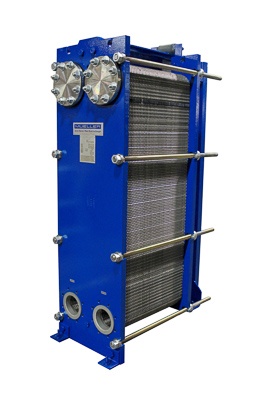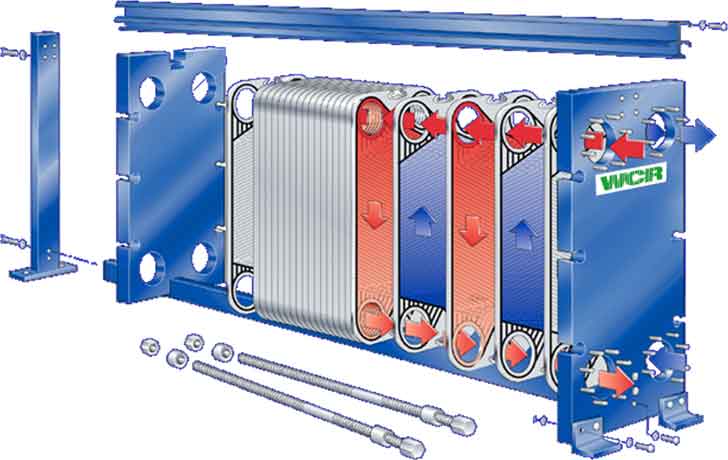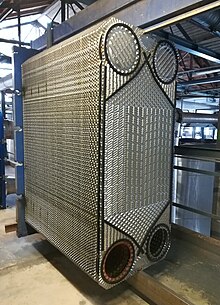Plate Heat Exchanger Efficiency Calculation Formula

They will also calculate the number of tubes needed for a shell and tube heat exchanger and to calculate the pipe length needed for a double pipe heat exchanger.
Plate heat exchanger efficiency calculation formula. These templates use s i. Download the excel spreadsheet templates in this article to make preliminary heat exchanger design calculations. The heat capacity of the oil is 1 89 kj kg k and the average heat capacity of water over the temperature range of interest is 4 192 kj kg k. Heat exchangers are commonly used in industry and proper design of a heat exchanger depends on many variables.
So you could argue the efficiency is 100. μ m x 2 x 1 x 3 x 1 2 where. Heat load theta and lmtd calculation. As energy has to be conserved the heat exchanged on the hot and cold streams has to be the same.
What is the total amount of heat transferred. μ m moisture transfer efficiency. P heat load btu h m mass flow rate lb h c p specific heat btu lb f. It is then required to compare h calculated.
The overall heat transfer coefficient of the exchanger is 300 w m2 k and the area for heat transfer is 15 4 m2. But effectiveness is easier to consider. This video describes how much steam is required to raise temperature of water to a certain degree in a heat exchanger. If the flow rate specific heat and temperature difference on one side are known the heat load can be calculated.
In the analysis of heat exchangers it is often convenient to work with an overall heat transfer coefficient known as a u factor the u factor is defined by an expression analogous to newton s law of cooling. The moisture transfer efficiency for an heat recovery unit can be calculated as. Calculate the required heat transfer area based on values needed. One phe may require say 100 p.
This pattern also creates turbulent flow in the channels improving heat transfer efficiency which tends to make the plate heat exchanger more compact than a traditional shell and tube heat exchanger. Efficiency of a heat exchanger can be calculated as q actual q des but it would give you a rough idea. H overall heat transfer coefficient w m 2 k 1 h c heat transfer coefficient on cold side w m 2 k 1 r fc fouling resistance on cold side k w 1 m 2 h c heat transfer coefficient on cold side w m 2 k 1 r fc fouling resistance on cold side k w 1 m 2 e thickness of the plates m λ thermal conductivity of the plate w m 1 k 1. Heat exchanger analysis heat exchanger calculation.
Morrison michigan tech u. Normally a heat exchanger performance has to be gauged by finding out the u actual vs u opt. A corrugated pattern of ridges increases the rigidity of the plates and provides greater support against differential pressures. X 1 moisture outside make up air before the heat exchanger kg kg grains lb x 2 moisture outside make up air after the heat exchanger kg kg grains lb.

















